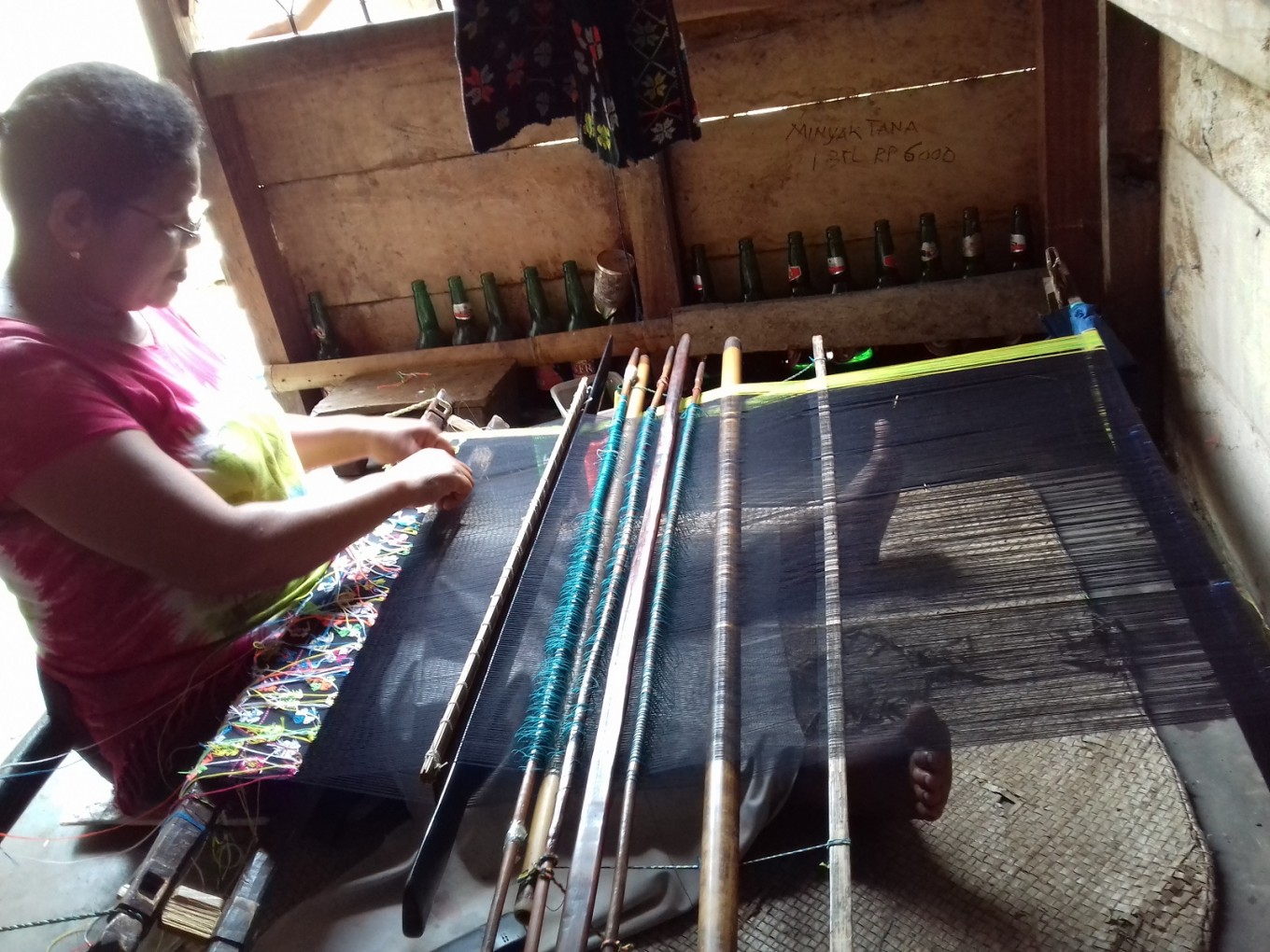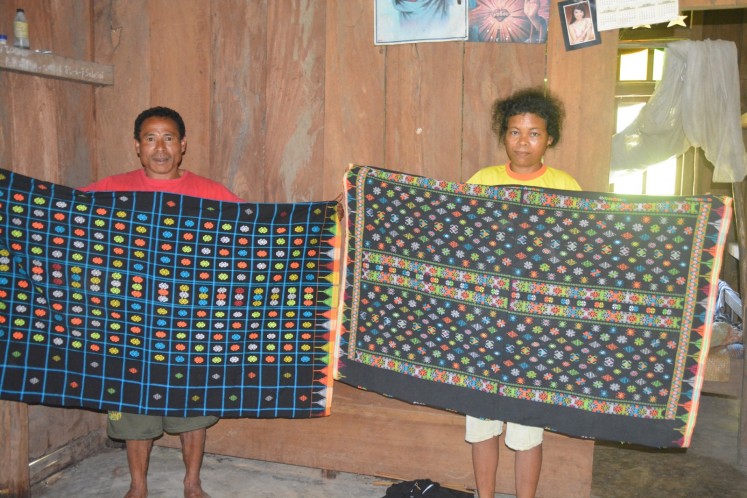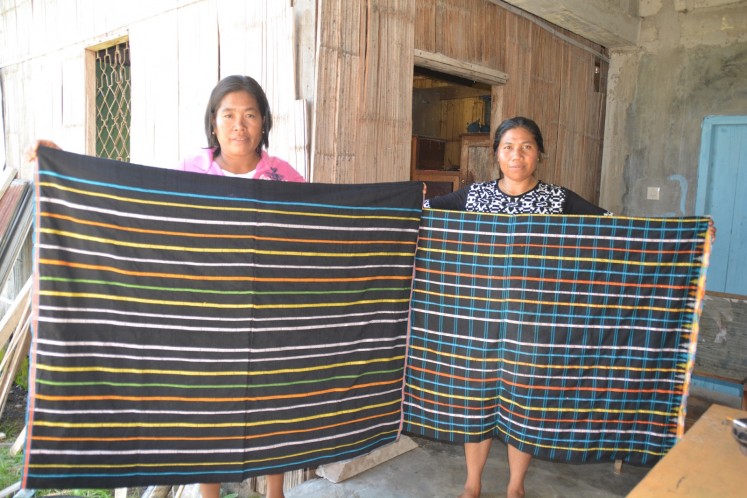Popular Reads
Top Results
Can't find what you're looking for?
View all search resultsPopular Reads
Top Results
Can't find what you're looking for?
View all search resultsWeaving to preserve heritage, make ends meet
Change text size
Gift Premium Articles
to Anyone
W
omen in five subdistricts in East Manggarai, Flores, East Nusa Tenggara, carry on the legacy of making woven fabrics, which they have inherited from their predecessors. The fabrics are part of their identity and the pride of their tribe’s culture.
Wearing their own woven fabrics is compulsory for the women, especially when attending traditional ceremonies. The women, therefore, take the time to weave and create fabrics, even if that means they have to juggle between domestic chores and working on the farm.
The five subdistricts that still produce the traditional songke woven fabrics are Elar, which produces the rembong motif, Sambirampas with its congkar motif, Lambaleda, East Poconaraka and Poconaraka. The latter three produce motifs that are named after the sub-districts.
Weaving traditions are passed from mother to daughter. Most of them only have elementary educations, and a woman usually starts weaving after she is married.
Berta Linur, 41, from Marabola hamlet, Ligurlai village, Elar, was weaving in her house when The Jakarta Post came to visit on Mar 11. She divides her time between weaving and tending to the garden and planting rice.
“I usually weave fabrics with a rembong motif, or occasionally an mbay motif from Nagekeo regency because they are easier to sell. Rembong pieces are often bought by locals for traditional weddings and other ceremonies,” she said.
Mbay pieces are easier to make, and Linur is able to produce four pieces every month, priced from Rp 200,000 (US$ 14.54) to Rp 500,000 per piece. Meanwhile, a rembong piece, which takes a month to make, is sold for Rp 800,000 to Rp 1 million.
A woman from Lambaleda subdistrict, Valentina Herni, 46, said that women in her neighborhood wove songke fabrics with lambaleda and manggarai motifs. As with women who weave in other areas, weaving is only a part-time job for her. She doesn’t produce more than five pieces of fabric a year, given that demand is light.
Herni is concerned that today’s young women in East Manggarai do not seem interested in weaving. The skill is mostly possessed by older women.
Meanwhile, Sofia Maria Nuria, 39, from Sambirampas subdistrict, focuses on weaving the congkar motif. It is a skill that she inherited from her mother. She produces four to five pieces of fabric every month, and the sizable ones are priced at Rp 500,000.
Women in East Manggarai, Flores, display 'congkar' woven fabrics. (JP/Markus Makur)“I still make a profit from selling the fabrics I produce. That’s why I carry on weaving," she said.
Also determined to keep weaving because the residents of Sambirampas subdistrict always wear the congkar fabric for traditional ceremonies, Sofia said that local officials were not doing much to improve the welfare of the weavers or to boost production.
Read also: Promoting traditional fabric in backpacker fashion
Berta, Valentina, Sofia and other weavers in East Manggarai use the money they earn from weaving to support their families. Some of the money goes to school tuition fee or to cover medical expenses. (mut)













